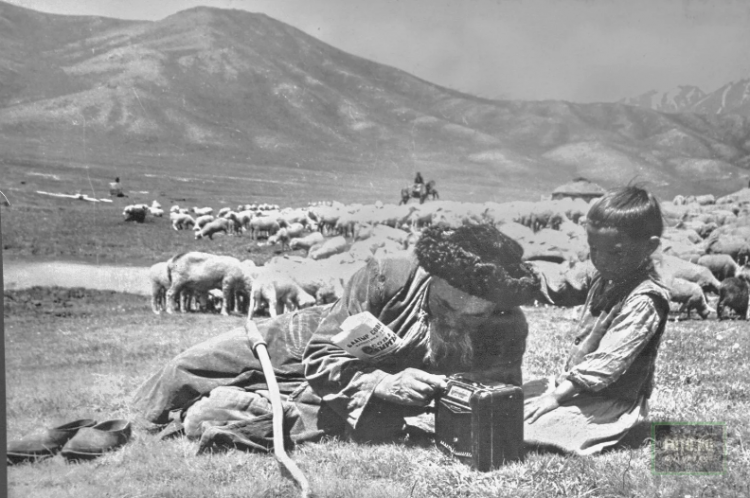The war exacerbated the situation regarding the supply of oil to the country's industry and transport. In Kyrgyzstan, large-scale oil production began only in 1937. On the eve of the war, it produced 23.8 thousand tons of oil per year, ranking seventh after the RSFSR, Azerbaijan, Kazakhstan, Turkmenistan, Ukraine, and Uzbekistan.
With the advance of German-fascist troops to the Volga and the foothills of the Caucasus, oil production in Baku sharply decreased, and in the Grozny and Maykop regions, it completely stopped. Under these conditions, the accelerated drilling operations in the eastern regions of the country became one of the most important military-political and economic tasks of the Soviet state. Oil workers in Kyrgyzstan, mobilizing all their efforts, significantly increased production, providing the country with 27.7 thousand tons of oil in 1941 and 28.3 thousand tons in 1942—more than before the war.
Although coal production in 1942 slightly increased compared to the pre-war level, the fuel situation remained extremely tense. Therefore, the use of local resources became of paramount importance. On August 21, 1942, the Council of People's Commissars and the Central Committee of the Communist Party (Bolsheviks) of Kyrgyzstan adopted a resolution on supplying the republic's economy with local fuel during the heating season of 1942/43. To oversee the procurement and distribution, a "Special Fuel Commission" was established under the Council of People's Commissars of the republic, consisting of Deputy Chairman of the Council of People's Commissars of the Kyrgyz SSR Sh. Karimov (chairman of the commission), Secretary of the Central Committee of the Communist Party (Bolsheviks) of Kyrgyzstan Golub, People's Commissar of the Ministry of Local Industry Guriyev, Chairman of the Frunze City Executive Committee Ya. Svishchev, and others.
While wood was the only type of fuel for a large number of enterprises in the European part of the USSR during the war, in Kyrgyzstan, due to the underdevelopment of the forestry industry, peat gained special significance in the fuel balance. Peat extraction at the Chui peat works began in June 1942. With the efforts of mobilized urban residents, 93.3 thousand cubic meters of peat were extracted by November during the summer-autumn season, exceeding the set target by 24.0%.
Combating Wastefulness and Mismanagement
Extensive work was carried out to strengthen the fight against wastefulness and the inefficient use of fuel. "The basis of this was a letter from the Propaganda and Agitation Department of the Central Committee of the All-Union Communist Party (Bolsheviks) 'On the Deployment of Mass-Political Work in Connection with the Implementation of the Savings Regime' and a memo sent with the letter 'Memo for Agitators on the Fight for Fuel and Electricity Savings.'
The Party tirelessly explained that the economical use of fuel is a daily painstaking task in the effort to enhance support for the front. The struggle for the economical consumption of coal, oil, and electricity was one of the leading points in individual and collective agreements on socialist competition.
A powerful means of influencing the broad masses in the fight for the strictest fuel savings regime was the central and republican press. Any excess consumption of coal, gasoline, or electricity should be viewed "as the embezzlement of state property," wrote "Pravda." A little later, the newspaper emphasized again that this was nothing less than "a crime, as the squandering of strategic raw materials during wartime."
Significant contributions to the savings regime were made by engineering and technical workers and enterprise leaders. The task was not only to adhere to the established consumption norms for fuel, raw materials, and materials but also to actually reduce them, seeking and finding opportunities to comply with new, more stringent wartime norms.
The intense creative searches of engineering and technical workers bore fruit. Only at the Frunze Leather Factory No. 1, the implementation of recommendations from production innovators in July-September 1942 led to a reduction in fuel consumption and saved 260.7 tons of imported coal. During this time, the energy workers of the Pishpek station depot achieved a reduction in fuel (coal) consumption norms by 80.8 tons without decreasing electricity production.
All these measures, carried out under the guidance of party organizations, played an important role in mobilizing the internal resources of the republic to increase military production.
Coal Production in Kyrgyzstan in the First Half of the Great Patriotic War













































